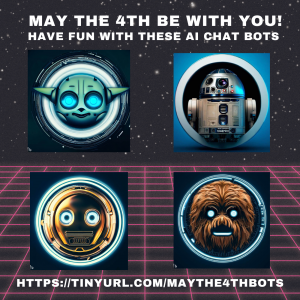Discover how ChatGPT, an Artificial Intelligence chatbot, can enhance your online classroom experience and boost student engagement. Read on for 10 creative ways to use ChatGPT in your online classroom.
Introduction
As the world becomes increasingly digitized, online learning has become the new norm. With the rise of e-learning platforms and virtual classrooms, technology has transformed the way we teach and learn. One such technological advancement that is stirring things up even more is ChatGPT, a large language processor that can understand and simulate human conversation.
There is a lot of concern around the technology, but ChatGPT is an innovative solution that could help educators create interactive and immersive online classrooms. It has the ability to understand natural language and provide personalized responses to students, making it an ideal tool for enhancing student-teacher communication.
In this article, we will explore 10 innovative ways you can incorporate ChatGPT in your online classroom to make learning more engaging and effective.
#1: Personalized Learning
One of the most significant advantages of using ChatGPT in your online classroom is its ability to personalize learning. With the help of artificial intelligence, ChatGPT can analyze each student’s learning patterns and provide personalized feedback and support. This can help students learn at their own pace and improve their overall performance.
#2: Virtual Teaching Assistant
Another exciting way to use ChatGPT in your virtual classroom is as a teaching assistant. ChatGPT can take on simple tasks such as answering common questions, providing reminders, and sending alerts to students. This frees up the teacher’s time, allowing them to focus on delivering high-quality instruction and engaging with students. Khan academy is already implementing this idea with their tutor bot “Khanmigo.”
#3: Assessments and Quizzes
ChatGPT can also be used to create assessments and quizzes in your online classroom. With its ability to understand natural language, ChatGPT can generate questions and provide instant feedback to students (either for the teacher or directly to the student). This can be an effective way to assess students’ understanding of the material and provide immediate feedback to help them improve. Look for more edtech tools coming soon with the feature that a Chatbot could be trained on a subject and then test their students for either formative or summative assessments in mind.
#4: Student Feedback
ChatGPT can also be used to gather feedback from students. It can ask open-ended questions or conduct surveys to gather feedback on various aspects of the online classroom, including content, delivery, and engagement. This information can be used to improve the quality of instruction and create a more engaging learning experience for students. We are not seeing great solutions to capture input, yet, but probably coming soon (with an eye to student privacy and data security).
#5: Virtual Writing Assistant
Another innovative way to use ChatGPT is as a virtual writing assistant. ChatGPT can provide suggestions and corrections for spelling, grammar, and sentence structure in real-time. This can help students improve their writing skills and produce high-quality work. You can even ask ChatGPT to read something and indicate where it might be unclear or needs more explanation. Maybe this could be a first good stop before a student turns in a final paper?
#6: Language Translation
ChatGPT can also be used to translate content into different languages. This can be especially useful for international students who may struggle with language barriers. With ChatGPT’s ability to understand natural language, it can accurately translate content and provide a better learning experience for all students. We just need to be careful to introduce this tool at the right time for the learner.
#7: Interactive Conversations
ChatGPT’s ability to understand natural language also makes it an ideal tool for conducting interactive conversations with students. This can be an effective way to engage students in discussions, debates, and other collaborative activities. Use a site like Poe.com to create custom made bots that a “training” in a particular direction for a student with an eye on a subject or outcome.
#8: Gamification
Gamification is another exciting way to use ChatGPT in your online classroom. With ChatGPT’s ability to generate questions and provide instant feedback, it can be used to create interactive games that make learning more fun and engaging for students. Wait until they can add AI images to these games on the fly!
#9: Summarizing and Research
ChatGPT can also be used to facilitate research by summarizing longer articles and providing terse responses to big questions. Some models will also provide references. Just be careful, AI is currently notorious for making up facts and displaying them with great confidence.
#10: Personalized Study Plans
Finally, ChatGPT can be used to create personalized study plans for students. With its ability to analyze learning patterns, ChatGPT can identify areas where students need additional support and provide personalized study plans to help them improve.
Conclusion
In conclusion, ChatGPT is an innovative solution that could revolutionize the way we teach and learn. With its ability to understand natural language and provide personalized responses, ChatGPT can enhance student-content connection and make learning more engaging and, potentially, effective. By incorporating ChatGPT into your online classroom, you can create a more interactive and immersive learning experience that could benefit your students in the long run.


